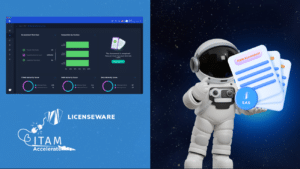The Great U-Turn: Citrix Re-Embraces VMware and Hyper-V in a Post-Broadcom World

In a stunning reversal of a long-standing and often controversial policy, Citrix has announced it will once again support mainstream hypervisors from VMware and Microsoft in its flagship virtual desktop platform.² This strategic U-turn, which abandons a policy designed to push customers onto Citrix’s own hypervisor, is a direct and calculated response to the seismic disruption unleashed on the virtualization market by Broadcom’s acquisition of VMware. By extending an olive branch to beleaguered VMware customers, Citrix is not only acknowledging market reality but is also positioning itself as a stable harbor in a turbulent sea.¹
The story begins around 2018, when Citrix made a pivotal and divisive decision. As industry reporting in July 2025 recounted, the company began restricting its newest and most advanced features, forcing customers who wanted the latest innovations to run their workloads on Citrix’s own hypervisor (formerly XenServer).¹ This created what was widely known as the “Citrix tax”—an implicit penalty for customers who had standardized their data centers on the dominant platforms, VMware vSphere or Microsoft Hyper-V, but still wanted to use Citrix’s best-in-class VDI solution. The strategy was clear: leverage its dominance in application and desktop virtualization to drive adoption of its own hypervisor. This move was deeply unpopular with many enterprise customers who had no desire to manage a separate, niche hypervisor island just for their Citrix workloads.
The Catalyst for Change: The Broadcom Effect
Fast forward to 2025, and the hypervisor market has been turned on its head. Broadcom’s takeover of VMware continues to cause chaos and uncertainty. The immediate post-acquisition strategy, which saw the termination of perpetual licenses, a forced march to often more expensive subscriptions, and the gutting of the partner program, has created a new class of “virtualization refugees.”³ Throughout 2025, reports have continued to highlight customer dissatisfaction, with many enterprises actively seeking alternatives and strategies to de-risk their infrastructure from Broadcom’s unpredictable roadmap and pricing.³
Citrix recognized this profound shift as both a threat and an opportunity. The threat was that customers, forced to re-evaluate their entire virtualization stack, might abandon Citrix along with VMware. The opportunity was to position itself as a customer-centric ally, providing a stable and flexible solution that works with, not against, a customer’s chosen infrastructure.
A Return to Choice and Flexibility
In a July 2025 blog post that marks a clear departure from its past, Sridhar Mullapudi, Citrix’s General Manager, announced the change. He stated, “With the next Citrix Virtual Apps and Desktops (CVAD) Long Term Service Release (LTSR) later this year, we will enable all Citrix features with any hypervisor.”² This means customers will once again be able to access all of Citrix’s latest features without being forced to use Citrix Hypervisor. The company has committed to supporting VMware vSphere 8 and the upcoming vSphere 9, as well as Windows Server 2022 and 2025.² This support also extends to workloads running on VMware and Microsoft public cloud infrastructure, such as Azure VMware Solution (AVS) and Google Cloud VMware Engine (GCVE).²
This is more than a technical update; it is a fundamental strategic pivot. By removing the “Citrix tax,” the company is eliminating a major point of friction for its customers. An organization struggling with Broadcom’s new terms can now upgrade its Citrix environment with confidence, knowing it won’t be forced into a painful and expensive hypervisor migration. This move effectively decouples the Citrix value proposition from the underlying hypervisor, allowing Citrix to focus on its core competency: delivering secure, high-performance access to applications and desktops, regardless of where they run.
This renewed openness also extends to other platforms. Citrix has maintained its strong partnership with Nutanix, continuing to support its AHV hypervisor throughout this period. The return to supporting VMware and Microsoft now positions Citrix as a more neutral, hardware-agnostic player in the VDI and Desktop-as-a-Service (DaaS) market.
For customers, this is an unqualified win, restoring choice and providing much-needed flexibility during a period of unprecedented market upheaval. For Citrix, it is a pragmatic and savvy business decision—a recognition that in the post-Broadcom world, the vendor that offers the most flexibility and the least friction is the one most likely to thrive.
Sources
- The Register, Citrix returns to supporting mainstream hypervisors in its virtual desktop platform (July 10, 2025) https://www.theregister.com/2025/07/10/citrix_returns_to_mainstream_hypervisors/
- Citrix Blogs, Enhancing customer choice with expanded hypervisor support (May 7, 2025) https://www.citrix.com/blogs/2025/05/07/citrix-and-nutanix-team-up-to-simplify-virtual-desktop-management/#:~:text=Introducing%20multi%2Dcluster%20environments%20hosted,the%20cloud%20or%20hybrid%20environments
- Blocks & Files, The Post-Broadcom VMware World: A Six-Month Retrospective (June 5, 2025) https://blocksandfiles.com/2025/06/05/the-post-broadcom-vmware-world-a-six-month-retrospective/










